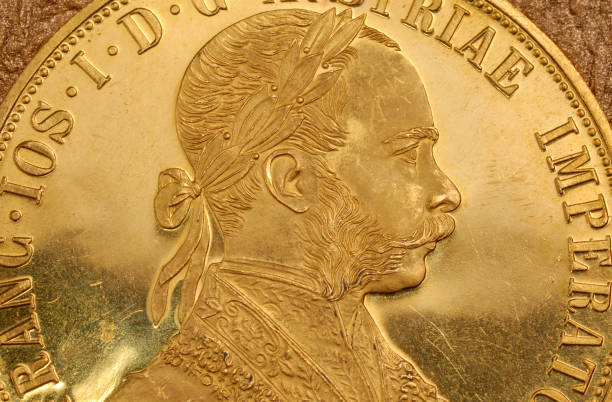By the 14th century, the Florentine florin (1252) and the Venetian ducat (1284) had established themselves as the most trusted gold coins in Europe. Their consistent weight, high gold purity, and acceptance in international markets made them the gold standard for trade across Europe, the Mediterranean, the Middle East, and Asia.
The success of the florin and ducat was not limited to their home cities—they became the foundation of global commerce, influencing trade, finance, and monetary policies for centuries.

Why Did the Florin & Ducat Become the Global Trade Standard?
1. Unmatched Stability & Purity
- The florin weighed 3.5 grams of nearly pure gold (98–99%).
- The ducat was even more refined, with a gold purity of 99.47%.
- Unlike other medieval coins, which were frequently debased (mixed with cheaper metals), the florin and ducat remained stable, increasing trust among merchants and bankers.
2. Wide Acceptance Across Continents
- Europe – Used by bankers, governments, and merchants in France, England, Germany, and Spain.
- Islamic World – The ducat and florin circulated alongside gold dinars, especially in North Africa and the Ottoman Empire.
- The Silk Road & Asia – Venetian and Genoese traders exchanged ducats for Chinese silk and Indian spices.
- The Byzantine Empire – The ducat was widely used in Constantinople after the decline of the Byzantine hyperpyron.
3. Essential for Banking & Finance
The florin and ducat became the currency of choice for international banking:
- Italian banking houses, such as the Medici Bank, used florins for loans, deposits, and trade financing.
- Venice’s financial system relied on ducats for government revenue, military spending, and diplomatic gifts.
4. Supported by Powerful Trade Networks
- Venetian merchants dominated trade in the Mediterranean and the Middle East, ensuring the ducat’s acceptance.
- Florentine bankers controlled much of Europe’s financial system, spreading the florin’s influence.
- Both coins were used in major trading hubs such as Alexandria, Constantinople, and Bruges.
The Florin & Ducat in Major Trade Routes
These gold coins became the foundation of several key medieval trade networks:
1. The Mediterranean & Middle Eastern Trade
- Venetian and Genoese merchants used ducats to buy silk, spices, and gold from the Islamic world.
- The Ottoman Empire adopted the ducat for trade with Europe.
2. The Silk Road & Asian Markets
- Venetian explorers like Marco Polo (1254–1324) described how gold coins were used for trade in China and Persia.
- Ducats and florins were exchanged for silk, porcelain, and precious stones.
3. The Hanseatic League & Northern Europe
- The Hanseatic League (Germany, the Baltic, and the Netherlands) used florins for trade with England and Russia.
- Dutch and German merchants adopted the ducat for banking and business.
The Long-Term Impact of the Florin & Ducat
The success of these gold coins laid the foundation for modern global currencies:
✅ Inspired later gold coins, such as the Spanish Escudo and the British Gold Sovereign.
✅ Established the idea of gold-backed currencies, influencing banking systems.
✅ Enabled European economic expansion, setting the stage for the Renaissance and Age of Exploration.
The florin and ducat remained in use for hundreds of years, with the Venetian ducat circulating until the 19th century.
Conclusion: Gold’s Rise as a Global Standard
By becoming the trusted currency for merchants, banks, and governments, the florin and ducat reshaped medieval trade and finance. These coins:
- Unified European and Middle Eastern trade under a common gold standard.
- Strengthened the role of Italian banking in global finance.
- Set the precedent for gold-based monetary systems that lasted into modern times.
The rise of gold coinage in Europe was a key step toward the global financial networks that emerged in the Renaissance and Age of Exploration.
